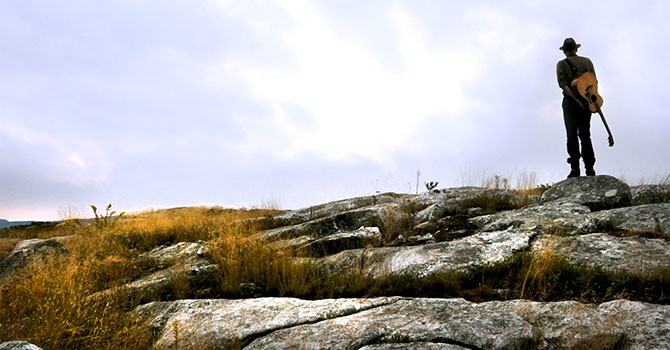Throughout my college years, I spent my evenings and most weekends working at a Borders bookstore in Chicago. It was the best place ever!
A rich aromatic and auditory mix welcomed everyone who came through the doors — freshly brewed coffee, new book smells, the whisper of pages turning in blessed harmony as our guests wove in and out of the labyrinth-like checkout lines with their treasures.
Years later, during a trip to Porto, Portugal, my family visited the famous Livraria Lello, known as an inspiration for the Harry Potter fantasy series. The store’s name translates as the Lello Bookshop, and the building itself is known for its Gothic exterior and elaborate Art Nouveau interior with a whimsical winding staircase. We were transfixed by the history, the folklore and the tourism as we waited in line to pose for our Instagram selfie.
More recently, I stopped by the Epilogue bookstore and cafe in Chapel Hill, North Carolina. The space communicated warmth and community with carefully curated book displays featuring a variety of authors. Handwritten notes by staff members recommended a next “must read.” I slipped away into the aisles of multigenre bliss, overwhelmed with childlike joy and gratitude.

Our experiences in all sorts of places can offer us a nurturing ground for our faith and spiritual connection to God, strengthening us through God’s beauty. Bookstores are secular sanctuaries for me that feed my faith with awe.
The formal definition of “awe” is “a feeling of reverential respect mixed with fear or wonder.” Andrew Tix writes in “Overwhelmed by Greatness: The Psychological Significance of Awe in Christian Experience and Formation” that awe “may be one of the most spiritually significant emotions that humans experience. And understanding and cultivating awe may be one of the keys to Christian formation.”
Tix cites the treatment of awe in Rudolf Otto’s theological classic “The Idea of the Holy,” noting in particular the two components Otto associates with the experience of the “mysterium tremendum”: “a sensation of trembling, which comes from a perception of being in the presence of something uncanny, overpowering, and vibrantly alive,” and “mystery, which typically leads a person to fascination, … to feelings of being astonished, thunderstruck, transfixed, or dumbfounded.”
Both components that Otto describes are chronicled throughout Scripture in the lives and experiences of diverse people who came face to face with the infinite and immensurable nature of God.
My first awe experience of God was through reading the Bible. I couldn’t have been more than 8 or 9 years old when my eyes found the words written in Daniel 3:24-26, where King Nebuchadnezzar realizes that not only have Shadrach, Meshach and Abednego survived the fiery furnace through their trust in God, but a fourth figure stands with them.
I was mesmerized! I felt a warmth rise in my heart, and my skin felt tingly all over. Tears formed in my eyes, and I couldn’t explain why. The power of those words leaped off the page and into my heart and fueled a confidence and trust in God that remains with me.
My experience was not an anomaly. The Bible chronicles expansive accounts of awe that correlate directly with an amplification of faith. The woman at the well in John 4:1-42, after having a choice conversation with Jesus, began sharing her testimony with the members of her community. Peter, in Matthew 14:22-33, dared to become a water walker, following Jesus’ example. In Luke 1:26-38, Mary, after a visitation from the angel Gabriel, courageously accepted the impossible task of birthing the Christ child.
Perhaps one of the most notable illustrations of awe transferred into passion is Paul’s transformation. In Acts 9:1-20, Saul of Tarsus was approaching Damascus when “suddenly a light from heaven flashed around him. He fell to the ground and heard a voice saying to him, ‘Saul, Saul, why do you persecute me?’ He asked, ‘Who are you, Lord?’ The reply came, ‘I am Jesus, whom you are persecuting’” (vv. 3-5 NRSV). Saul got up from the ground and later began to proclaim Jesus as God’s Son.
We also see the awe of God through nature. Abraham, in Genesis 15, was invited to dream under the stars when asked by God to picture his legacy. Moses, in Exodus 3, was terrified by a voice from a burning bush when he learned of the plan of rescue for God’s people.
Apart from the strictly theological, Ralph Waldo Emerson marvels at the divine attributes of nature and its effects in his essay “Nature”:
“In the woods, we return to reason and faith. There I feel that nothing can befall me in life, — no disgrace, no calamity, (leaving me my eyes,) which nature cannot repair. Standing on the bare ground, — my head bathed by the blithe air, and uplifted into infinite space, — all mean egotism vanishes. I become a transparent eye-ball; I am nothing; I see all; the currents of the Universal Being circulate through me; I am part or particle of God. The name of the nearest friend sounds then foreign and accidental: to be brothers, to be acquaintances, — master or servant, is then a trifle and a disturbance. I am the lover of uncontained and immortal beauty.”
Why cultivate a practice of awe? Researchers have discovered many positive physiological, psychological and social responses in people who experience awe. Summer Allen writes in “The Science of Awe” that heart rate changes, sensations of chills and goosebumps are associated with feelings of awe and cites evidence that awe “may even decrease markers of chronic inflammation.”
Allen also points to studies showing that experiences of awe can produce a diminished sense of self and can make people more kind and generous.
Along with research in scientific spaces on the physical and mental benefits of awe, there is the spiritual connection gained or developed through the experience.
Because “awe” can also be translated as “reverence,” it can be described in a larger sense of worshipping God. Worship as a physical act of honor and homage — or as a way of life, as Paul teaches in 1 Thessalonians — helps cultivate a practice of awe in an unequivocal way that deepens our faith and draws us nearer to God.
Understanding awe’s why, how can we then begin to cultivate it as a practice to deepen our faith? Through its contemplative roots, lectio divina helps us slow down with its four components — read, meditate, pray and contemplate. If we can be silent and hear what God is saying, the practice can lead to actionable steps that transfer into Christian life.
To help incorporate more awe into daily life, Greater Good Magazine suggests engaging in activities such as these:
- Write a narrative about a time when you felt a sense of awe.
- Read a brief story that will inspire awe.
- Be mindful of nature to foster feelings of awe and connection.
- Turn off your cellphone and take a walk to increase your sense of wonder.
Wherever your journey takes you, from grand exploits to intentional practices to adventures on the shelves of your local bookstore or library, God’s awe awaits your discovery and embrace.
Our experiences in all sorts of places can offer us a nurturing ground for our faith and spiritual connection to God, strengthening us through God’s beauty.
















